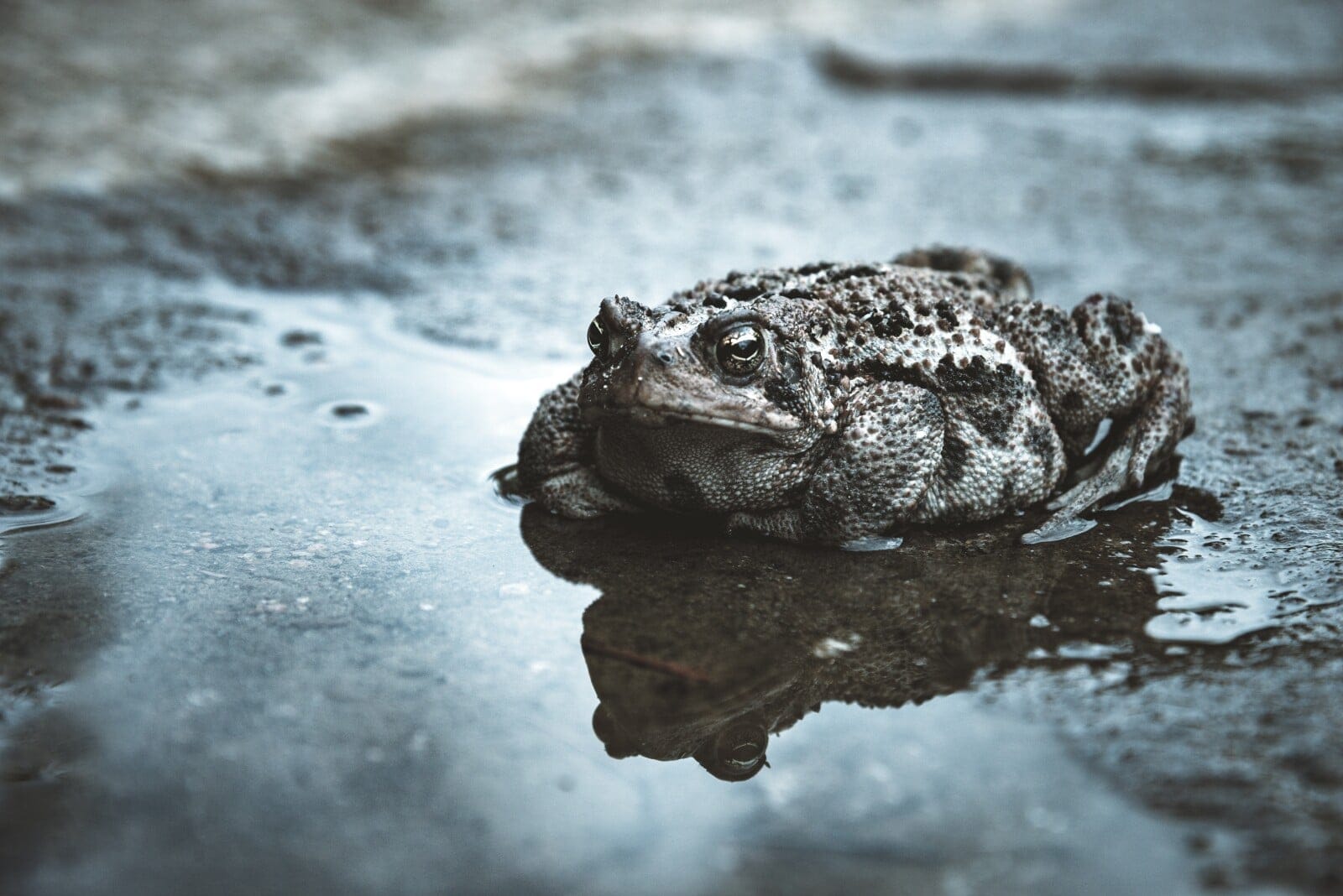Prepare to be amazed as we dive into the captivating world of frog respiration and uncover the surprising secret: can frogs really breathe underwater? Join us on an underwater adventure to unravel the mysteries of how these incredible creatures manage to thrive in both aquatic and land-based environments. Discover the unique adaptations and physiological mechanisms that allow frogs to navigate diverse water bodies, from murky ponds to crystal-clear streams. Together, we’ll explore the limitations and risks associated with their underwater breathing, and uncover the remarkable variations and adaptations that have evolved among different frog species. Dive in and get ready to be astonished by the hidden wonders of frog respiration!
A Frog’s Breathing Toolkit: More Than Meets the Eye
Ever wonder how a frog can chill in a pond, seemingly without coming up for air? Frogs possess a remarkable ability to breathe both air and water, thanks to their unique, permeable skin and dual respiratory systems. This amazing ability, called cutaneous respiration, allows them to absorb oxygen directly from the water around them. They also have lungs, just like us, which they use to breathe air when they’re on land. This dual breathing system makes frogs highly adaptable creatures.
Now, while frogs can breathe underwater, it’s not quite as straightforward as fish breathing with gills. Think of it this way: skin breathing is like sipping a drink through a tiny straw, while lung breathing is like gulping down a whole glass. So, while their skin provides a steady trickle of oxygen, it’s often not enough to sustain them indefinitely underwater. They still need to come up for a good gulp of air now and then.
The Underwater Balancing Act: How Long Can Frogs Hold Their Breath?
So, if they can breathe underwater, how long can they actually stay submerged? Well, most frogs can hold their breath for a good while, something like 4 to 7 hours on average. But, and this is an important “but,” that timeframe isn’t set in stone.
Think about it, you probably hold your breath for longer when you’re just chilling compared to when you’re swimming laps. It’s the same deal for frogs. How active they are, the water temperature, and even the type of frog all play a part in how long they can stay underwater.
How long a frog can stay submerged depends on a few things. One important factor is the water temperature. Cold water holds more dissolved oxygen than warm water. Imagine a glass of iced tea versus a hot cup of tea; the cold one retains its fizz longer, right? Similarly, a frog in cold water has access to more oxygen, allowing it to stay submerged for longer periods. Conversely, in warm, stagnant water, oxygen levels can drop, making it harder for the frog to breathe through its skin, and it will need to surface more frequently for air.
Another key factor is the frog’s activity level. Just like us, frogs use more oxygen when they’re active. A frog chilling on the pond bottom probably isn’t burning much energy, so its skin breathing might be enough. But a frog chasing after a tasty insect will need more oxygen, and will likely have to rely more on its lungs.
From Tadpoles to Adults: A Tale of Two Breathing Systems
So, we’ve already talked a bit about frogs and their amazing ability to live both in water and on land. Now, let’s dive deeper into the mystery of how they breathe. It’s a bit more complicated than you might think! The question of whether they sport gills or lungs isn’t a simple either/or. The truth is, it’s a bit of both, depending on their life stage.
Think of it like this: frogs kind of have a “teenage” phase underwater as tadpoles. During this stage of their life, they actually do have gills, just like fish! These feathery little organs allow them to extract oxygen directly from the water flowing around them. Pretty cool, right? But this underwater breathing setup doesn’t last forever.
As tadpoles grow, they undergo an incredible transformation called metamorphosis. It’s like a real-life superhero origin story! During this process, they gradually lose their gills and develop lungs. These lungs are what adult frogs use to breathe air on land. But there’s another twist to this tale of two breathing systems.
Even with fully developed lungs, frogs also have this superpower of breathing through their skin! It’s like having a built-in backup system. This special ability, called cutaneous respiration, allows them to absorb oxygen directly from the air or water through their skin. It’s especially important when they’re underwater or hibernating through the winter under mud. Their lungs aren’t quite as powerful as ours, so this skin-breathing trick helps them get the extra oxygen they need.
Here’s a handy table summing it up:
| Life Stage | Breathing Method |
|---|---|
| Tadpole | Gills |
| Adult Frog | Lungs and Skin (Cutaneous Respiration) |
A Watery World: Can Frogs Truly Live Underwater?
So, we’ve talked about how cool frogs are, but can they actually live entirely underwater? Well, it’s not a simple yes or no answer. You see, it really depends on the type of frog we’re talking about.
Think of it like this: some frogs are like us, they need to come up for air. These are your typical “semi-aquatic” frogs – they love hanging out in ponds and streams, but they also need to hop onto land every now and then to catch their breath. They’ve got lungs just like you and me! But here’s the thing, their skin plays a part too! It’s specially designed to absorb a little bit of oxygen from the water, like a built-in snorkel. Pretty neat, right?
But then you’ve got your real water-lovers – the “fully aquatic” frogs. These guys are the pros, spending their entire lives underwater. They’ve evolved in a way that lets them pull all the oxygen they need right out of the water, either through gills (like fish!) or through super-efficient skin. It’s like they’ve unlocked a secret underwater breathing level! The African Clawed Frog and the Titicaca Water Frog are prime examples of these water-dwelling wonders.
Now, let’s talk about hibernation. You might be surprised to learn that some of those semi-aquatic frogs, the ones that usually need to surface, can actually survive underwater for a long time during the colder months. How do they do it? Well, when they hibernate, their bodies slow way down. They don’t need as much oxygen, so they can rely entirely on their skin for breathing. It’s like they go into energy-saving mode!
The Drowning Risk: Even Frogs Aren’t Immune
And while that special skin does help them breathe underwater, it’s not a foolproof system. Even though they can absorb oxygen through their skin, frogs can still drown if their lungs fill with water. This could happen if they’re underwater for too long, or if water gets in through their nostrils. Imagine trying to breathe with a face full of water – not fun, right?
“Unfortunately, frogs can indeed drown. You now know that frogs have lungs, just like humans do. And, also like humans, if their lungs fill with water, they can drown. You might think: but frogs breathe through their skin, right? Yes, they can! But this depends on how much oxygen is in the water around them.”
Unraveling the Enigma: A Closer Look at Frog Respiration
Scientists are still actively researching frog respiration, and there’s still much to learn. We know some of the basics, but the specifics of how different frog species manage their oxygen intake in various conditions are still being explored.
- Species Adaptations: Some frog species have developed really neat adaptations, like extra folds of skin or slower metabolisms, that allow them to stay submerged for longer periods. Research into these adaptations is constantly going on, so we might learn even more fascinating details soon!
- Environmental Factors: It’s worth noting that the efficiency of cutaneous respiration depends on factors like temperature and humidity. Some experts suggest that colder water holds more dissolved oxygen, making it easier for frogs to breathe through their skin in these conditions. There’s still a lot we are learning about how different environmental conditions affect frog respiration.
- Diversity in Breathing: It’s also important to remember that not all frog species are exactly alike. While the general principles of gill-breathing in tadpoles and lung/skin-breathing in adults apply widely, there might be variations and specialized adaptations depending on the specific species and their habitat. The beauty of nature lies in its diversity!
So, while we can say with a good degree of certainty how frogs generally breathe, there are still many fascinating details researchers are actively investigating. It’s a constantly evolving field of study, and new discoveries might change our understanding further. Who knows what other secrets these amazing amphibians hold?
If you’re interested in learning more about genetics, check out our article on bikini bottom genetics for more information.
- Senior at What Age: Benefits & Eligibility Guide - March 29, 2025
- Unlocking Senior Benefits: How Old is a Senior? Your Complete Guide - March 29, 2025
- Master Russian Politeness:A Guide to Saying Please - March 29, 2025
















